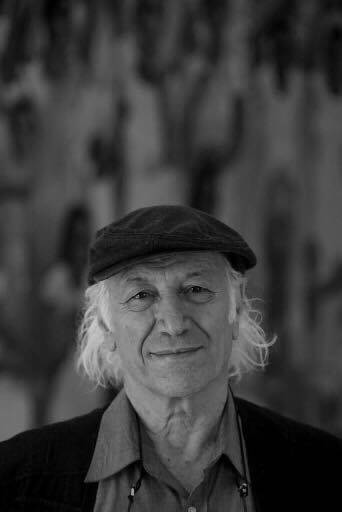
Born in 1948, Jamil Molaeb is a Lebanese artist based in Baissour. He holds a master’s degree from Pratt Institute in New York and a PhD degree in Art Education from the University of Ohio. Formerly, he was a professor of art at the Lebanese American University and the Lebanese University.
Since 1966, he has held different solo and group exhibitions all around the world. Starting his artistic career with two exhibitions at Dar El fan between 1967 and 1972, he is represented in Lebanon by its successor Galerie Janine Rubeiz where he has held different solo and collective exhibitions. Most recently, the gallery has showcased his “Jerusalem” series in a solo show in September 2018.
Considered a pioneering artist of the Lebanese Modern Era, Molaeb’s work has been featured excessively in local and international art fairs and exhibitions: Abu-Dhabi Art Fair, Beirut Art Fair, Art Dubai and Art14 London. His work has been acquired by distinguished Public and private collections including The World Bank in Washington DC.
His large colourful paintings, constructed in a single identical operation, symbols emerge out of their alphabet and bifurcate into solid architectural forms, creating uncanny aerial like views, operating often as cultural archetypes.
About his work
Jamil Molaeb's signature paintings conceive of the colour field - the ultimate destination for an abstract painter -as a traditional landscape, and evokes through those minimal pictorial frameworks, the magic simplicity of miniatures and icons. There is also a place for genre painting, however, executed in an expressionist style, while not shying away from the folklore element. In his woodcuts, Molaeb demonstrates a unique skill to converse between parallel techniques, temporalities and concepts: Resorting to a traditional technique, inherited from the Italian 15th century (coeval with the first oils on canvas), the artist deploys quintessential modernist strategies that would be easily read by the expressionist and post-expressionist painters of Europe, indubitably alerted by his bright palette combined with primal archetypes, characteristic of pre-classical art.
Jamil Molaeb kept on exhibiting canvases inspired as much by Western art history as by ancient Egyptian, Sumerian and Babylonian art. Not one to be confined within a single style, Molaeb easily switches from village scenes to minimalist compositions with squares of bright colours. When he paints a landscape, it is to celebrate the nature that surrounds him through the reproduction of the sensations and emotions it inspires him.